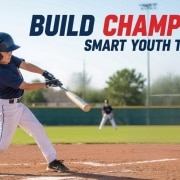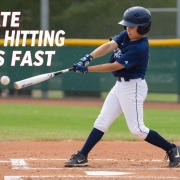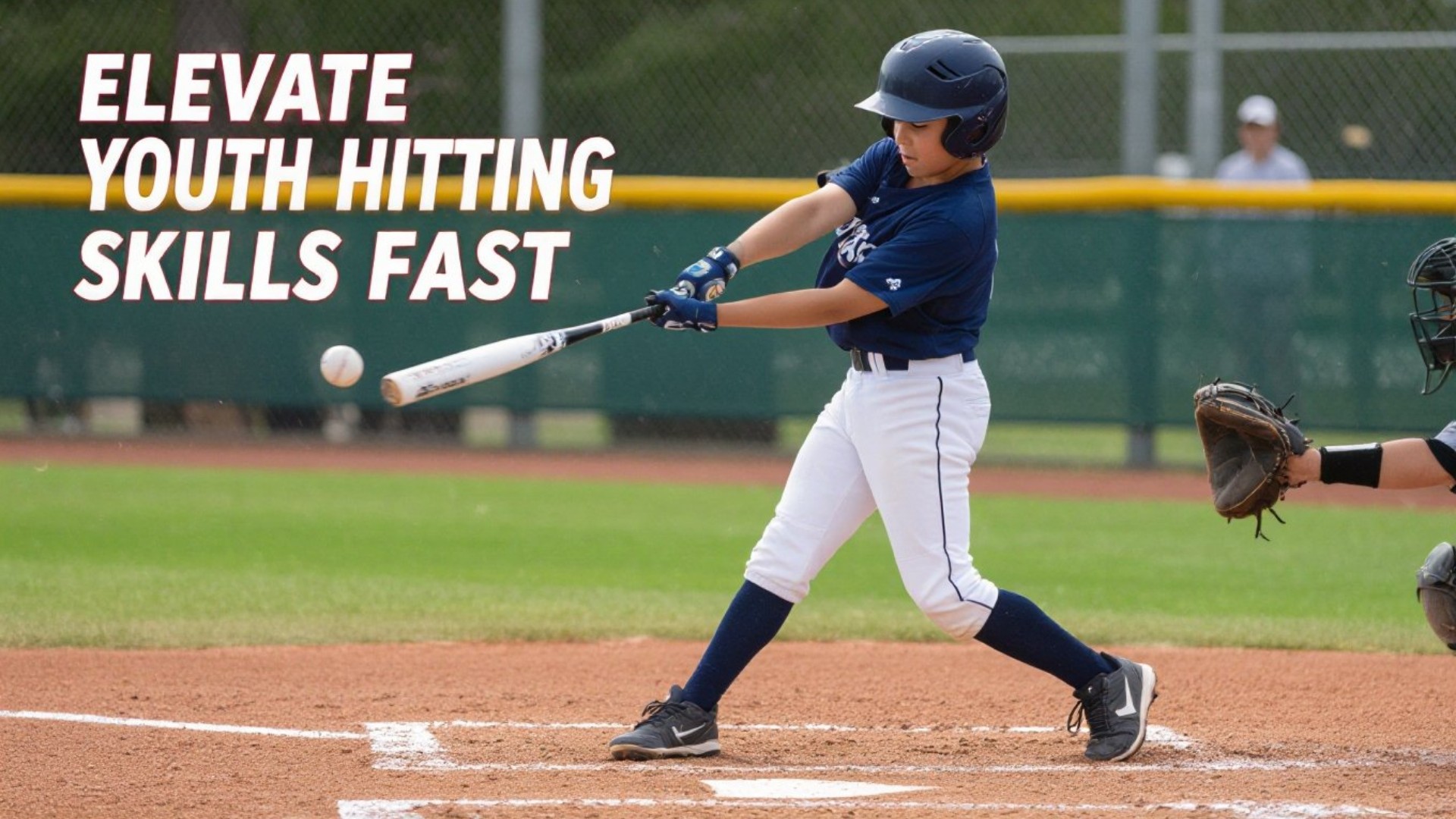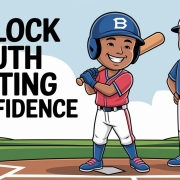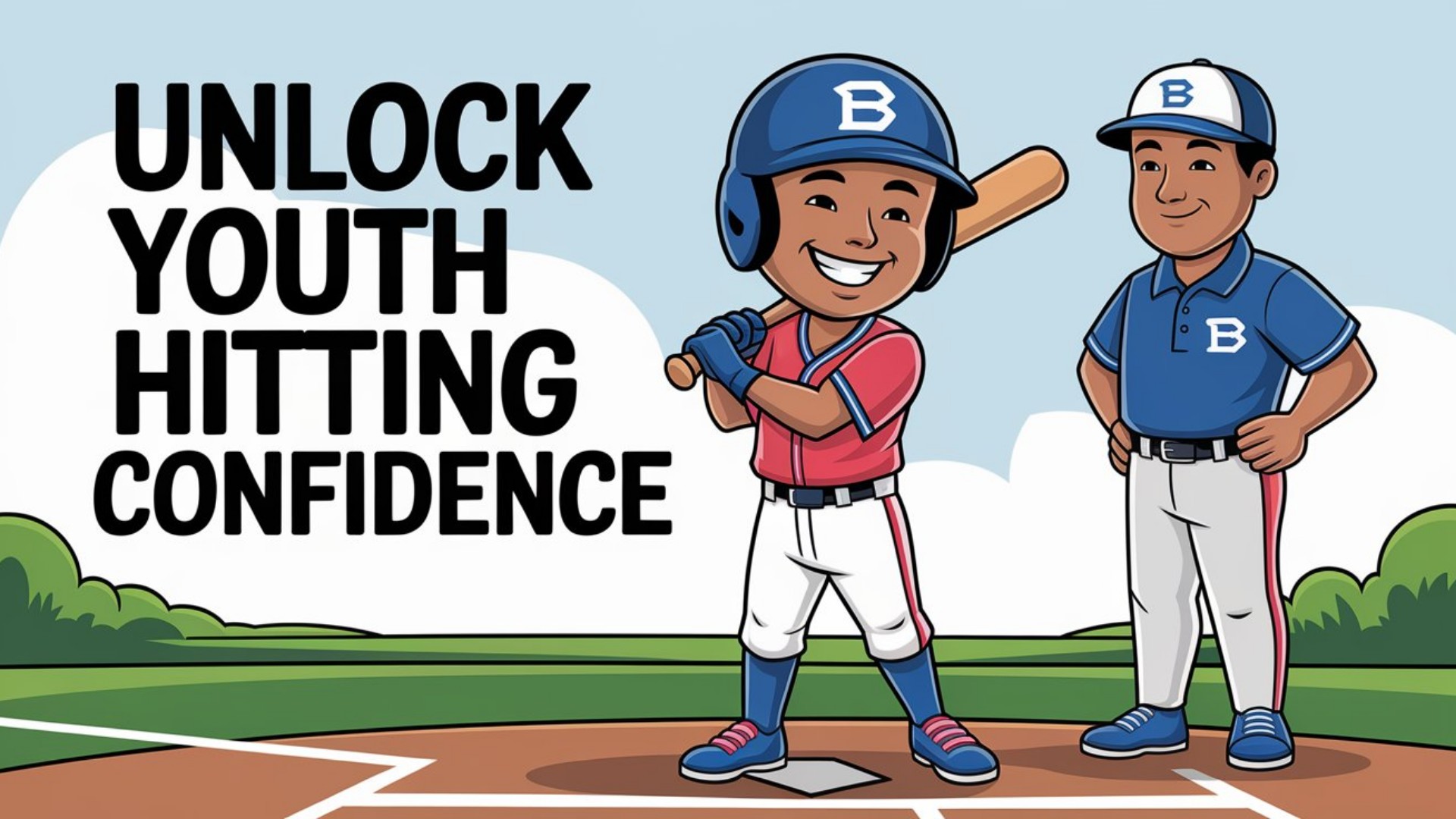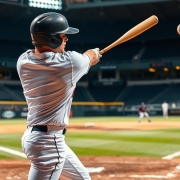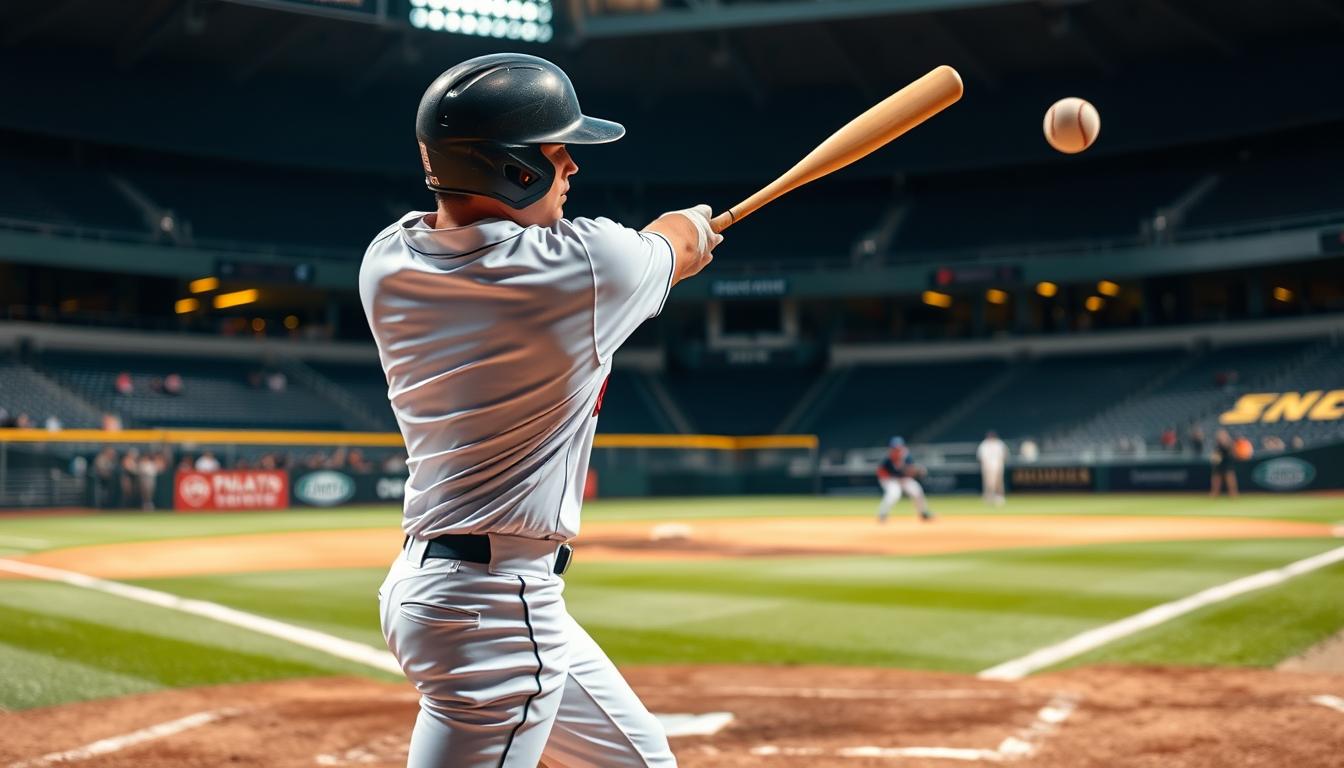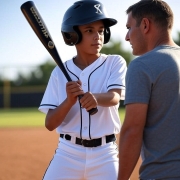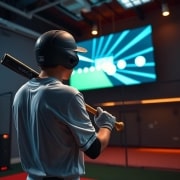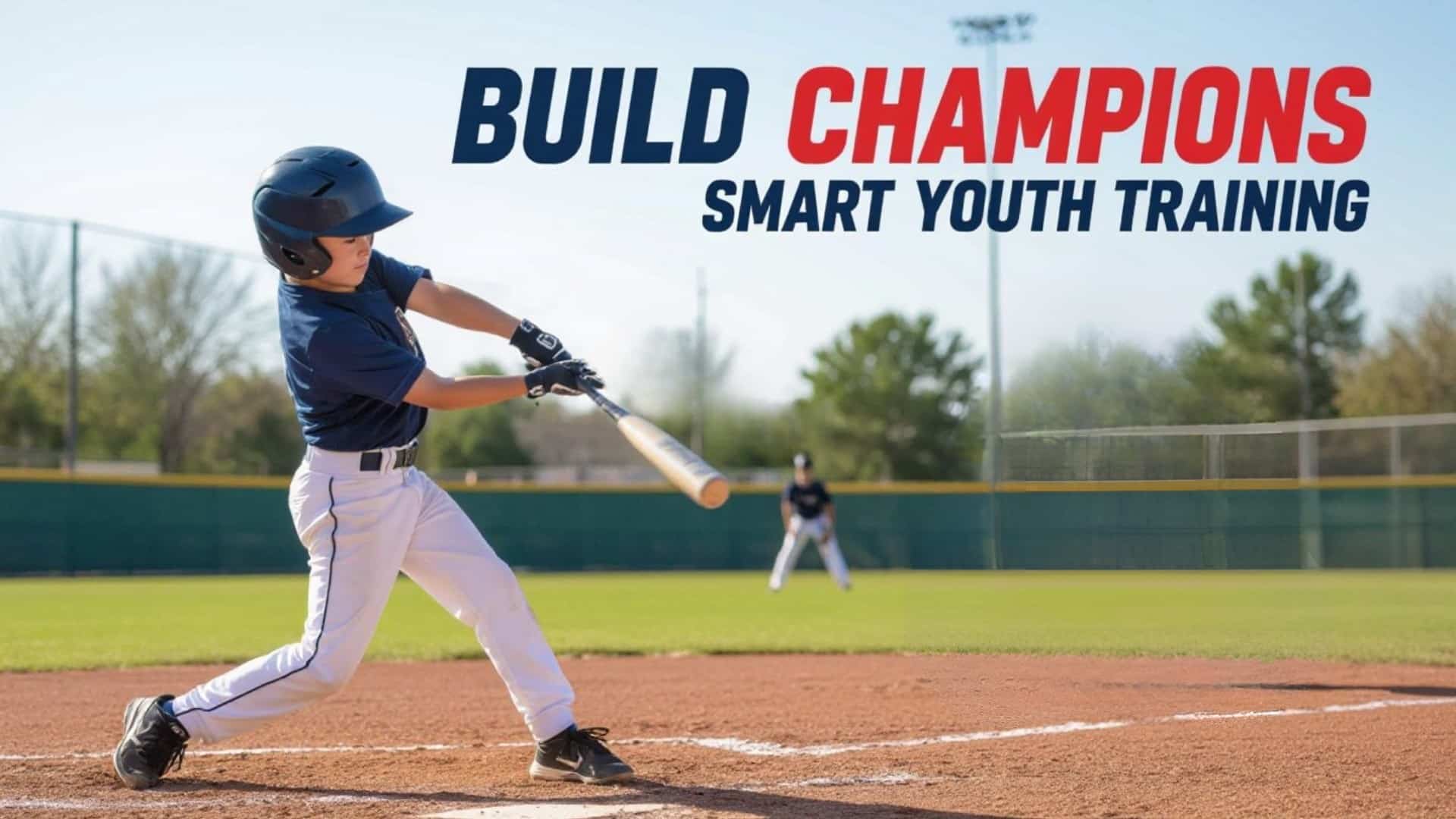
The AI Coaching Course 2025 is a game changer for youth baseball and softball parents and coaches who often feel overwhelmed. It tackles the chaos by simplifying practice organization, which usually consumes hours each week. With easy-to-use resources, it helps coaches manage varying skill levels without confusion. Plus, parent communication becomes a breeze with ready-made templates that keep everyone informed. Coaches can create tailored practice plans in under a minute, giving them more time to focus on player development instead of logistics. This tool not only enhances athlete performance but also reduces stress for busy coaches and parents alike, making practices more enjoyable overall.
Table of Contents
- Understanding the AI Coaching Course 2025
- Addressing Common Coaching Challenges
- Transforming Chaos into Order
- Key Features of the AI Coaching Course
- Creating Custom Practice Plans Fast
- Building Effective Workouts Year-Round
- Enhancing Parent Communication Efforts
- Tracking Athlete Progress Effectively
- Benefits of Using the AI Coaching Course
- Success Stories from Coaches and Parents
- Frequently Asked Questions
Understanding the AI Coaching Course 2025
The AI Coaching Course 2025 is crafted especially for busy youth baseball and softball coaches who juggle multiple responsibilities. Coaches often find themselves overwhelmed with the demands of practice planning, workout schedules, and parent communication. This course utilizes advanced AI to simplify these processes, allowing coaches to focus on what they love most: teaching the game. It effectively addresses common pain points such as the chaos of organizing practices. For example, a coach might spend hours each week figuring out how to plan a session that meets the diverse skill levels of their players. With this course, those lengthy hours are reduced to mere minutes. Coaches can create organized practice plans in less than a minute, freeing up time and energy to engage directly with athletes.
Furthermore, the course supports both in-season and off-season training, ensuring that athletes stay on track year-round. It offers easy-to-use templates that help coaches maintain a structured approach to workouts, which is crucial for athlete development. Without requiring any technical skills, the course provides solutions that streamline communication with parents, making it easier to keep them informed and engaged. By simplifying logistics and administrative tasks, the AI Coaching Course empowers coaches to allocate more time toward skill development, ultimately enhancing the overall experience for both coaches and athletes.
Addressing Common Coaching Challenges
Coaching youth baseball and softball comes with its share of challenges, often leaving coaches feeling overwhelmed. One major issue is the time-consuming nature of practice organization. Coaches may find themselves spending hours each week developing practice plans, which can take away from valuable coaching time. Additionally, tracking athlete progress is crucial, yet many coaches struggle to monitor their players’ growth effectively amidst their busy schedules.
Another common challenge is managing diverse skill levels within a single team. Coaches frequently face the task of ensuring that all athletes receive the appropriate level of training and engagement, which can be confusing and daunting. This complexity is compounded by the need for efficient communication with parents. Many coaches still rely on outdated methods that make keeping parents informed about schedules and player progress a cumbersome task.
Administrative duties can quickly pile up, leaving coaches feeling bogged down. Balancing the planning of practices with game strategies often leads to stress, especially when quick adjustments are necessary. Furthermore, limited resources for personalized training can hinder a coach’s ability to cater to individual athlete needs, making it challenging to keep everyone motivated year-round. Planning effective workouts can also be a source of confusion, as coaches need to ensure that their athletes are developing the right skills while maintaining their enthusiasm for the sport.
- Time-consuming practice organization
- Difficulty in tracking athlete progress
- Managing diverse skill levels within a team
- Inefficient parent communication methods
- Overwhelming administrative tasks
- Balancing practice planning with game strategies
- Limited resources for personalized training
- Struggles with keeping athletes motivated year-round
- Confusion in planning effective workouts
- Need for quick adjustments to practice plans
Transforming Chaos into Order
The AI Coaching Course simplifies the chaotic world of youth sports coaching. With structured templates, coaches can quickly plan practices, transforming hours of work into mere minutes. This not only saves time but also reduces the stress that comes with juggling schedules and athlete needs. Automated tools help streamline the process, allowing coaches to focus on what truly matters: athlete development. Clear guidelines for creating practices and workouts enhance clarity and ensure that everyone is on the same page. Coaches can easily track multiple athletes’ progress, making it simpler to provide tailored feedback. This system also fosters better communication with parents, easing the anxiety often felt around scheduling and updates. Flexibility is built-in, allowing adjustments to be made on the fly. Ultimately, this approach encourages a consistent training routine and supports a positive team culture, making the coaching experience more enjoyable for everyone involved.
Key Features of the AI Coaching Course
The AI Coaching Course 2025 offers several key features designed to make coaching easier and more effective. One standout feature is the customizable practice plan generator, which allows coaches to create tailored practice sessions in just a few clicks. This tool considers the team’s specific needs and skill levels, integrating relevant drills and game scenarios seamlessly.
Another significant aspect is the user-friendly interface. Coaches can navigate through the platform effortlessly, whether they are seasoned professionals or new to coaching. The integration of drills suited for various skill levels ensures that every athlete gets the appropriate challenge, fostering growth and confidence.
The course also includes resources for athlete conditioning and recovery, emphasizing the importance of maintaining physical health throughout the season. Coaches can access pre-written communication templates to keep parents informed and engaged, which helps in building strong relationships between coaches and families.
Progress tracking tools provide comprehensive feedback, allowing coaches to monitor individual athlete development over time. This feature is crucial for identifying areas for improvement and tailoring future practices accordingly. Additionally, there are templates for off-season and in-season workouts, ensuring that athletes stay on track year-round.
Finally, the course fosters a supportive community of coaches who share insights and best practices. This community aspect not only encourages collaboration but also enhances the overall coaching experience.
| Feature | Description |
|---|---|
| Practice Plan Generator | Quickly generates customized practice plans tailored to the team’s needs, skill levels, and available equipment. |
| Off-Season & In-Season Workout Builder | Provides templates for creating effective workout plans that maintain athlete development throughout the year. |
| Parent Communication Tools | Offers ready-to-use message templates for communicating with parents, simplifying updates on practice schedules and player progress. |
| Athlete Performance Tracking | Monitors progress and performance metrics, allowing coaches to provide targeted feedback and track athlete growth over time. |
Creating Custom Practice Plans Fast
Creating custom practice plans has never been easier. With the AI Coaching Course, coaches can generate tailored practice plans in under 60 seconds, significantly cutting down on planning time. Each session is designed to meet the specific needs of the team, ensuring that skill development is a core focus. Coaches can also make adjustments based on athlete feedback, allowing for a more responsive approach to training. This flexibility helps coaches utilize available equipment efficiently, ensuring that no resources are wasted.
To keep athletes engaged, the course promotes a variety of drills and activities. This variety not only makes practices fun but also helps athletes develop a broader skill set. Coaches can include options for competitive scenarios, providing athletes with real-game experiences during practice. Furthermore, the AI tools assist in planning balanced workloads, so athletes are neither overworked nor under-challenged.
One of the biggest advantages of this system is how it alleviates the stress of last-minute planning. Coaches can feel confident knowing they have a solid plan ready to go, which allows them to focus on fostering creativity in practice design. By streamlining the practice planning process, the AI Coaching Course empowers coaches to spend more time developing their athletes and less time worrying about logistics.
Building Effective Workouts Year-Round
Creating effective workouts year-round is crucial for young athletes in baseball and softball. The AI Coaching Course 2025 provides structured workout templates tailored to keep athletes engaged and developing, regardless of the season. During the off-season, these templates focus on maintaining skills, ensuring that players do not lose their edge while away from the field. For instance, incorporating drills that emphasize hand-eye coordination and agility can keep skills sharp, even when practice time is limited.
In-season workouts offer a different challenge, as athletes need to balance skill maintenance with recovery. The course includes recovery strategies that help athletes recharge, reducing the risk of injury and burnout. This might involve lighter workout days or specific recovery sessions that focus on flexibility and strength, allowing players to perform at their best during games.
Additionally, the course provides guidance on conditioning tailored for different sports, recognizing that baseball and softball demand unique physical requirements. By integrating strength and conditioning principles, athletes build resilience and flexibility, crucial traits for long-term success. With easy adaptation of workouts, coaches can modify plans based on individual athlete needs, ensuring everyone stays challenged and engaged.
Ultimately, the course emphasizes continuous athlete development, supporting both physical and mental growth. By fostering an environment where athletes can thrive year-round, coaches help young players not only improve in their sport but also develop a lifelong love for physical activity.
Enhancing Parent Communication Efforts
Effective communication with parents is crucial in youth sports. The AI Coaching Course 2025 streamlines updates on practice schedules, making it easier for coaches to keep parents informed. By utilizing automated communication tools, coaches can send timely reminders and updates, reducing misunderstandings related to schedules. This transparency fosters a collaborative environment where parents feel included in their child’s development. For instance, ready-to-use templates for regular progress reports allow coaches to share insights on player performance, encouraging parental involvement. Quick responses to parent inquiries help build positive relationships, ensuring parents stay engaged and informed. Overall, these tools not only enhance communication but also promote a supportive atmosphere that benefits the entire team.
Tracking Athlete Progress Effectively
Tracking athlete progress effectively is essential for fostering growth and development within youth baseball and softball teams. By monitoring performance metrics over time, coaches can provide targeted feedback that highlights areas for improvement. This data-driven approach allows coaches to set specific goals for each athlete, paving the way for individualized development plans that cater to unique strengths and weaknesses.
Empowering athletes to take ownership of their training is another significant advantage of effective progress tracking. When players see their own development patterns and can compare their progress with teammates, it encourages accountability and a sense of competition. For example, if one athlete notices they have improved their batting average while another has not, it can motivate both to focus on their training.
Moreover, using data to inform coaching strategies promotes a culture of continuous improvement. Coaches can adjust practices and drills based on what the metrics reveal, ensuring that every session is relevant and effective. Whether it’s emphasizing speed, agility, or technique, the insights gained from tracking progress can lead to better skill development across the board.
Benefits of Using the AI Coaching Course
The AI Coaching Course offers numerous advantages that can significantly enhance the coaching experience. One of the most notable benefits is the time saved in practice planning. Coaches can create tailored practice plans in under 60 seconds, freeing up valuable time that can be redirected towards skill development and athlete support. Improved communication with parents is another key advantage, as pre-written templates facilitate clear and consistent updates, fostering better relationships and reducing misunderstandings.
The personalized training plans provided by the course lead to enhanced athlete development. By catering to individual needs, athletes are more engaged and motivated to improve. This targeted approach not only boosts performance but also increases retention rates, ensuring that young players remain committed to their teams. Additionally, the course helps reduce administrative stress for coaches, allowing them to focus on what they love most: coaching.
Moreover, the AI Coaching Course encourages better organization within coaching staff, creating a cohesive unit that works together more efficiently. This organization fosters a more engaging environment for athletes, where they feel supported and valued. The course also promotes ongoing learning and adaptation, equipping coaches with tools to continuously improve their methods. Lastly, users gain access to a supportive coaching community, sharing experiences and insights that further enhance their coaching journey. With proven success rates reported by existing users, the benefits of the AI Coaching Course are clear and impactful.
Success Stories from Coaches and Parents
The AI Coaching Course 2025 has made a significant impact on the lives of many coaches and parents, creating success stories that highlight its effectiveness. Coaches report improved team performance metrics, showcasing how streamlined practice planning leads to better athlete outcomes. Parents have shared positive feedback about enhanced communication, noting that they feel more connected and informed about their child’s progress. This course has not only increased athlete engagement but also satisfaction, as young players enjoy a more structured and supportive environment.
Many coaches have transformed their experiences, feeling supported and confident in their roles. They have expressed gratitude for the time saved in planning, allowing them to focus on what truly matters, developing athletes’ skills. For instance, one coach shared that by using the practice plan generator, they reduced preparation time significantly, enabling them to spend more quality time coaching on the field.
Additionally, case studies illustrate successful athlete development, with numerous examples of players improving their skills and performance. One parent highlighted how their child went from struggling with fundamentals to becoming a key player on the team, crediting the tailored workouts provided by the course. The evidence of enhanced team dynamics is clear, as coaches notice better collaboration and morale among players.
Overall, the course has become a trusted resource, creating a supportive network for coaches and parents alike. The testimonials reflect a shared belief that this program not only improves the effectiveness of practices but also fosters a community where young athletes can thrive.
Frequently Asked Questions
What is the main focus of the AI Coaching Course for youth baseball and softball?
The AI Coaching Course aims to provide a structured practice plan and personalized workout builder for young athletes to improve their skills both during the season and in the off-season.
How does the workout builder adapt to different skill levels?
The workout builder is designed to cater to various skill levels, allowing coaches to customize workouts based on individual player’s abilities and needs.
Can this course help with both baseball and softball practices?
Yes, the course is suitable for both baseball and softball, offering relevant drills and practice strategies for each sport.
What kind of resources are included in the AI Coaching Course?
The course includes practice plans, workout templates, instructional videos, and tips for coaching young athletes effectively.
Is the course appropriate for beginners in youth baseball or softball?
Absolutely, the course is structured to help beginners learn fundamental skills while also providing advanced strategies for more experienced players.
The AI Coaching Course 2025 offers youth baseball and softball coaches and parents a streamlined approach to managing practices and workouts. By using AI tools, coaches can generate custom practice plans in under 60 seconds, build effective year-round workout regimes, and enhance communication with parents. This course addresses common coaching challenges like organization and time management, making the process easier and more efficient. Proven successful by over 28,000 users, it empowers coaches to focus on athlete development rather than administrative tasks.

